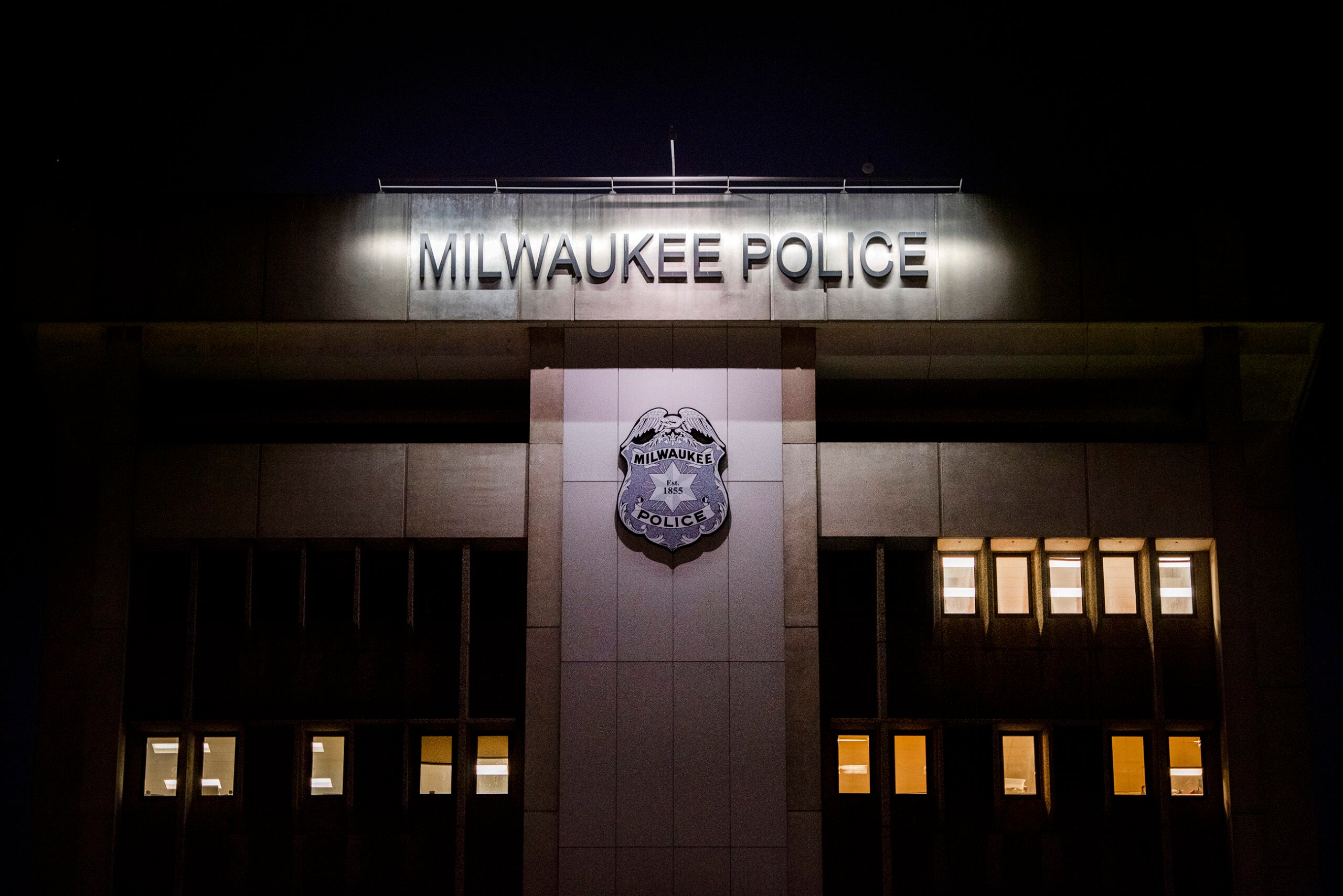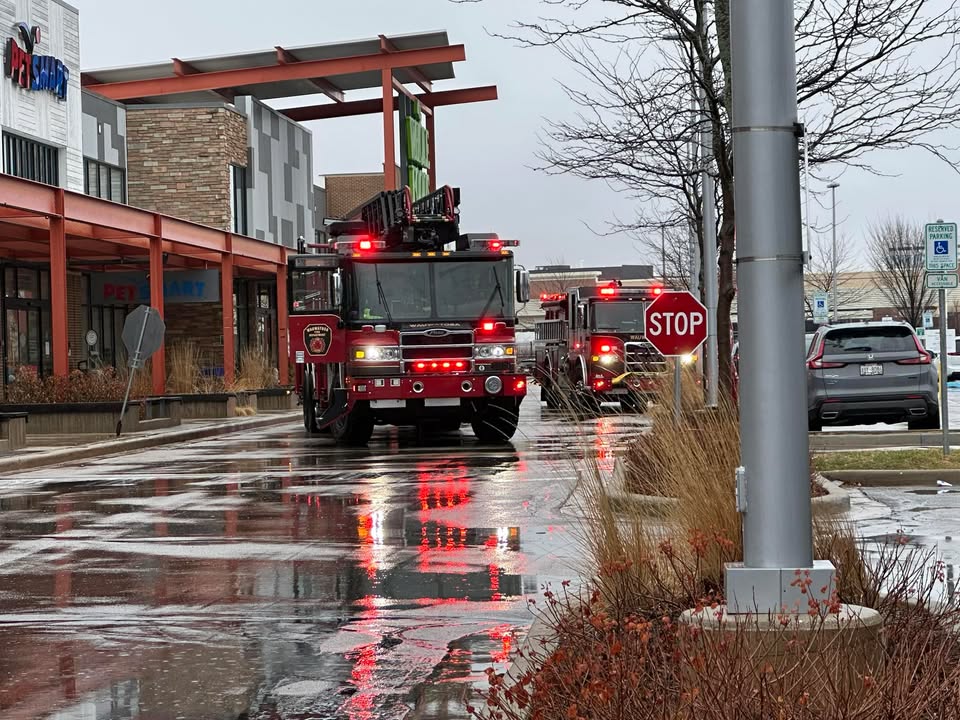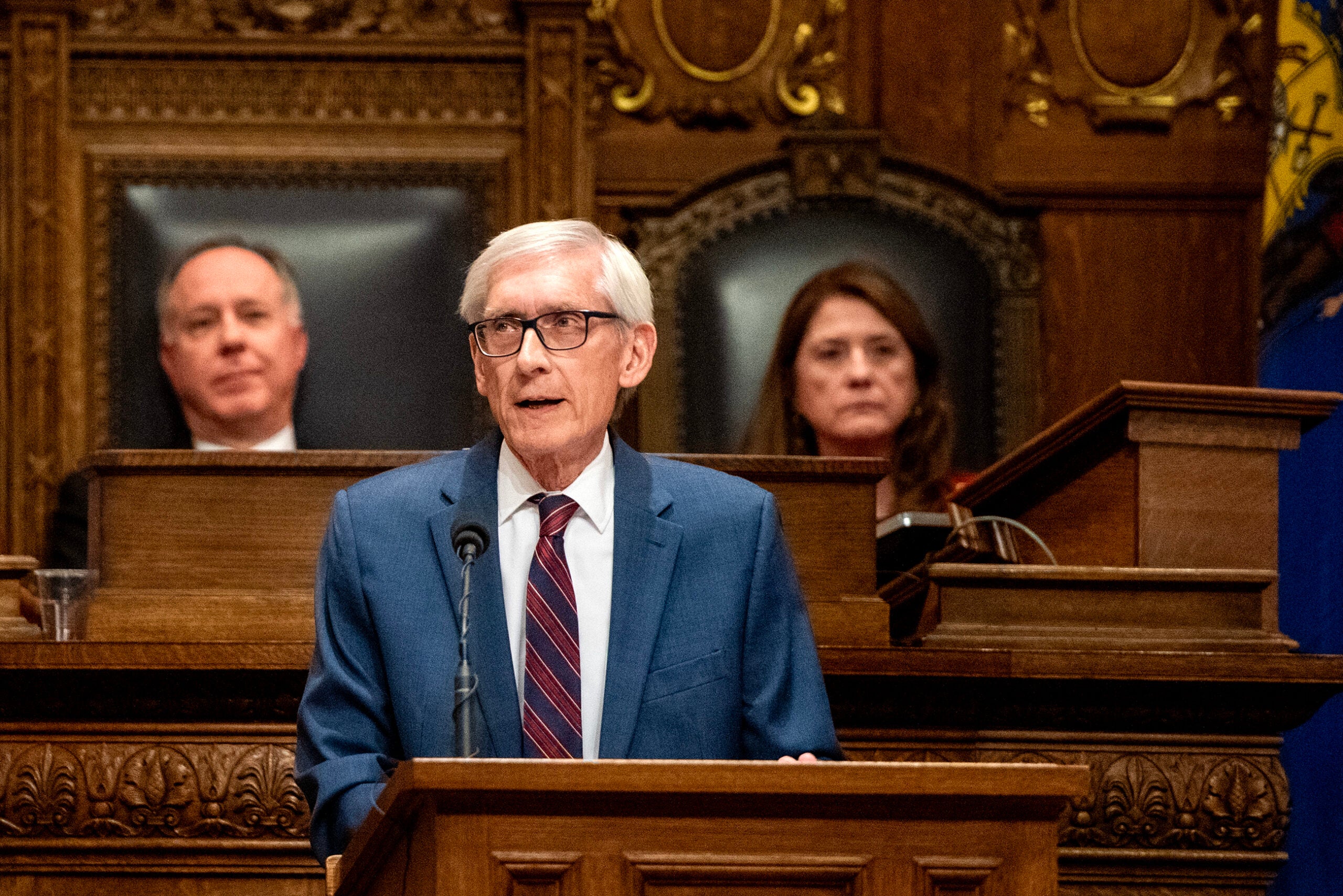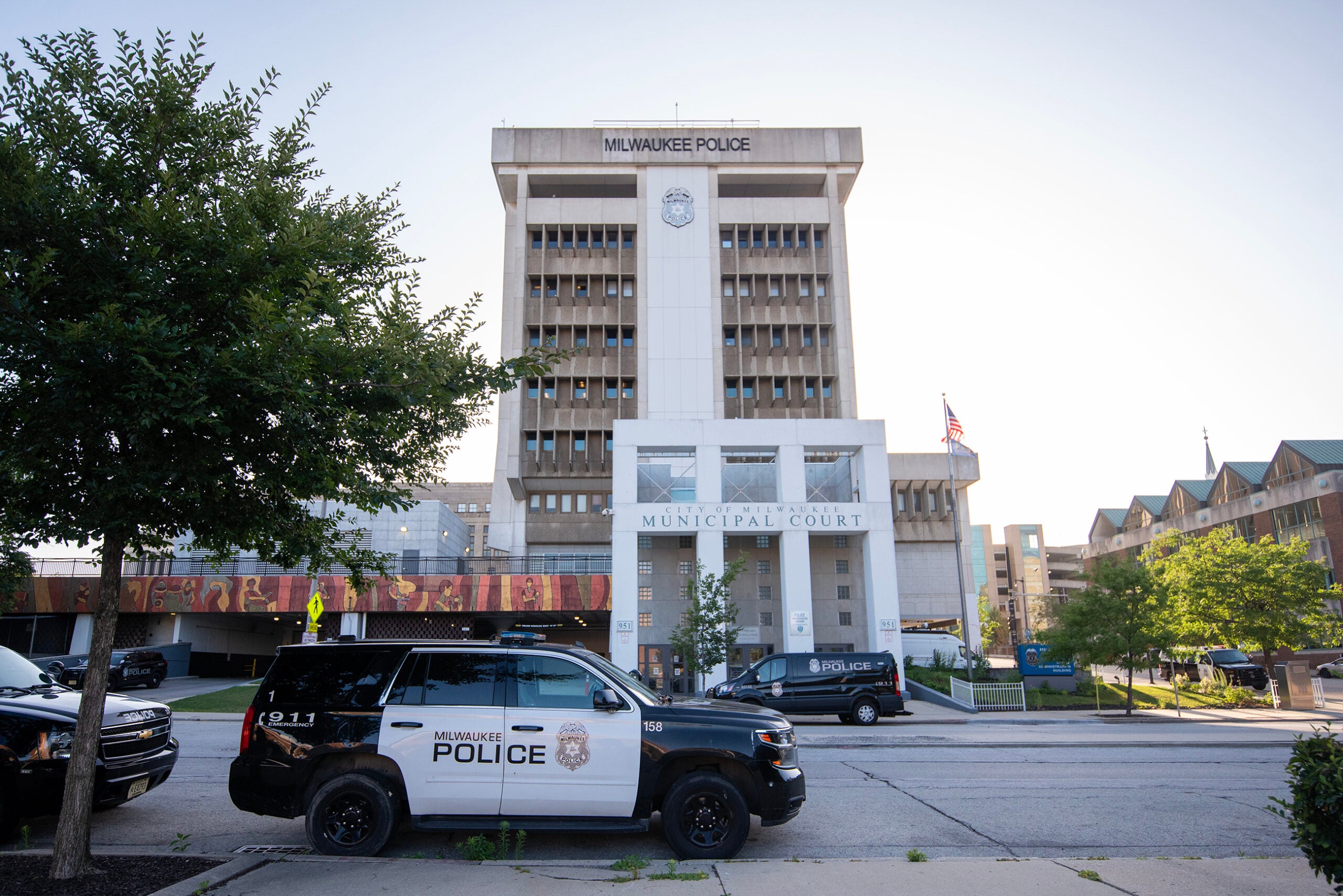A new report shows police departments across Wisconsin saw their budgets cut and number of sworn officers reduced before the killing of George Floyd in Minneapolis last May and the national “defund police” debate.
The Wisconsin Policy Forum report released Tuesday states the data suggests cutting police and fire department budgets is less about a deliberate attempt to defund them and more about confronting difficult fiscal realities.
The report comes after Gov. Tony Evers vetoed a bill passed by the Republican-controlled Legislature that would have cut state aid to communities that reduce police budgets.
News with a little more humanity
WPR’s “Wisconsin Today” newsletter keeps you connected to the state you love without feeling overwhelmed. No paywall. No agenda. No corporate filter.
The policy forum looked at expenditure data from the state Department of Revenue for 1,854 cities, villages, and towns in Wisconsin. Police, fire and emergency medical services make up the bulk of municipal budgets. In 2019, those services accounted for about $2 of every $5 spent, according to the data. And Wisconsin’s 50 most populous municipalities spent at least 40 percent of their operating budget on these three services in 2019.
At the same time, Wisconsin municipalities have been operating under strict property tax limits for more than a decade and aid from the state has declined.
Jason Stein, Wisconsin Policy Forum research director, said as local governments need to reduce their spending, they look at their highest costs.
Last year in Milwaukee, the city cut 120 officers but the Milwaukee Police Department’s budget remained virtually the same, at about $300 million, because the savings was spent on increased costs for salaries, health care and other personnel-related costs.
Stein noted that police and fire departments are one of the few groups in the state that still has robust collective bargaining units, but the jobs their doing also can’t be replaced.
“There’s no way to have an app put out a fire. There’s no way to have an app help someone who’s having a heart attack,” Stein said. “A lot of ways where we can help save efficiencies in government and business is where you can have machines do things, where you can have algorithms do things, and you can’t have an algorithm investigate a burglary.”
For the report, the forum also examined police staffing levels using the most recent FBI Uniform Crime Reporting data for 304 municipal police departments in Wisconsin.
From 2018 to 2019, seventy-nine Wisconsin police departments reported increasing their sworn officers, while 59 decreased them. The rest remained the same. Of the departments that had a decrease in sworn officers, Oshkosh had the largest decrease at eight. Six departments had an increase of at least 10 officers.
Milwaukee’s decrease was not included in the data because it happened in 2020.
Overall, total police employment, including civilians, in Wisconsin increased 2 percent, from 9,364 employees in 2018 to 9,554 in 2019. But the number of sworn officers increased just 1.2 percent, according to the data collected by the forum.
Editor’s note: The Associated Press contributed to this report.
Wisconsin Public Radio, © Copyright 2026, Board of Regents of the University of Wisconsin System and Wisconsin Educational Communications Board.





